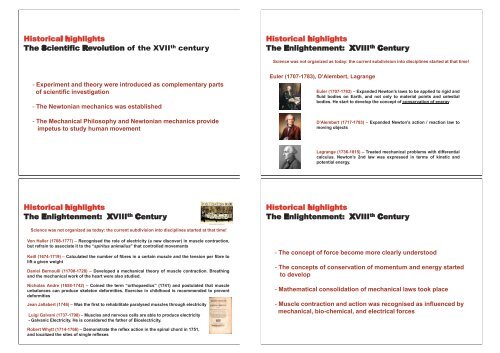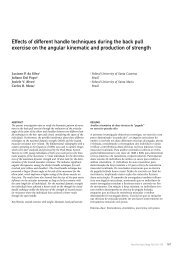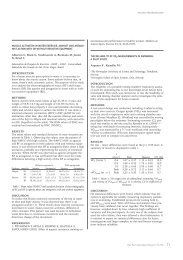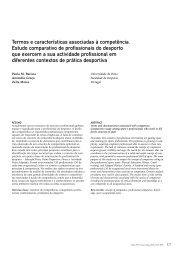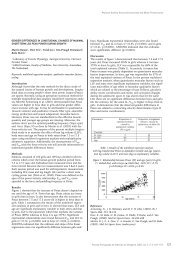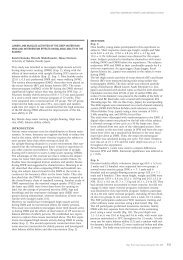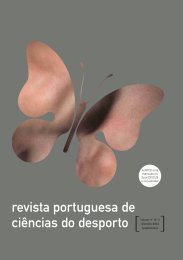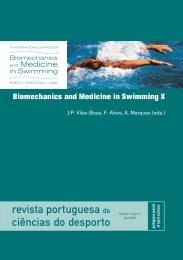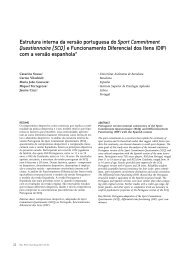Biomechanics
Biomechanics
Biomechanics
Create successful ePaper yourself
Turn your PDF publications into a flip-book with our unique Google optimized e-Paper software.
Historical highlights<br />
The Scientific Revolution of the XVIIth century<br />
- Experiment and theory were introduced as complementary parts<br />
of scientific investigation<br />
- The Newtonian mechanics was established<br />
- The Mechanical Philosophy and Newtonian mechanics provide<br />
impetus to study human movement<br />
Historical highlights<br />
The Enlightenment: XVIIIth Century<br />
Science was not organized as today: the current subdivision into disciplines started at that time!<br />
Von Haller (1708-1777) – Recognised the role of electricity (a new discover) in muscle contraction,<br />
but refrain to associate it to the “spiritus animalius” that controlled movements<br />
Keill (1674-1719) – Calculated the number of fibres in a certain muscle and the tension per fibre to<br />
lift a given weight<br />
Daniel Bernoulli (11700-1728) – Developed a mechanical theory of muscle contraction. Breathing<br />
and the mechanical work of the heart were also studied.<br />
Nicholas Andre (1658-1742) – Coined the term “orthopaedics” (1741) and postulated that muscle<br />
unbalances can produce skeleton deformities. Exercise in childhood is recommended to prevent<br />
deformities<br />
Jean Jallabert (1746) – Was the first to rehabilitate paralysed muscles through electricity<br />
Luigi Galvani (1737-1798) – Muscles and nervous cells are able to produce electricity<br />
- Galvanic Electricity. He is considered the father of Bioelectricity.<br />
Robert Whytt (1714-1766) – Demonstrate the reflex action in the spinal chord in 1751,<br />
and localized the sites of single reflexes<br />
Historical highlights<br />
The Enlightenment: XVIII th Century<br />
Science was not organized as today: the current subdivision into disciplines started at that time!<br />
Euler (1707-1783), D’Alembert, Lagrange<br />
Euler (1707-1783) – Expanded Newton’s laws to be applied to rigid and<br />
fluid bodies on Earth, and not only to material points and celestial<br />
bodies. He start to develop the concept of conservation of energy<br />
D’Alembert (1717-1783) – Expanded Newton’s action / reaction law to<br />
moving objects<br />
Lagrange (1736-1815) – Treated mechanical problems with differential<br />
calculus. Newton’s 2nd law was expressed in terms of kinetic and<br />
potential energy.<br />
Historical highlights<br />
The Enlightenment: XVIIIth Century<br />
- The concept of force become more clearly understood<br />
- The concepts of conservation of momentum and energy started<br />
to develop<br />
- Mathematical consolidation of mechanical laws took place<br />
- Muscle contraction and action was recognised as influenced by<br />
mechanical, bio-chemical, and electrical forces


